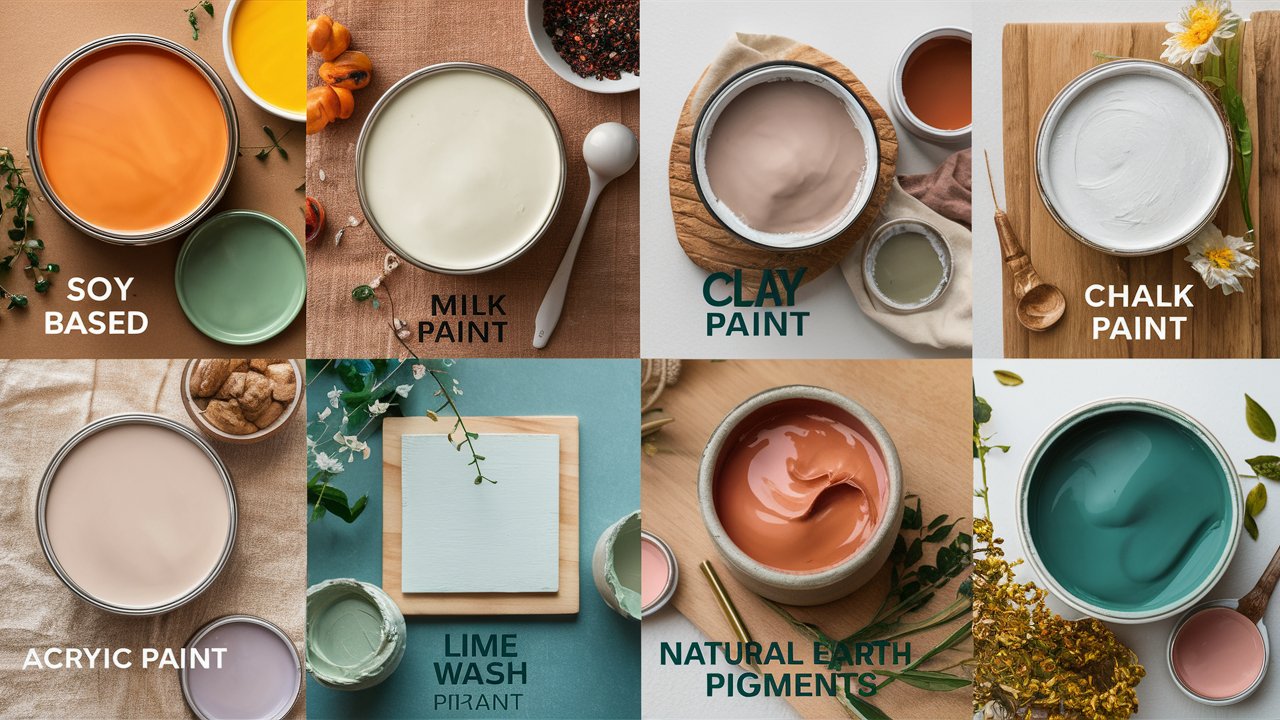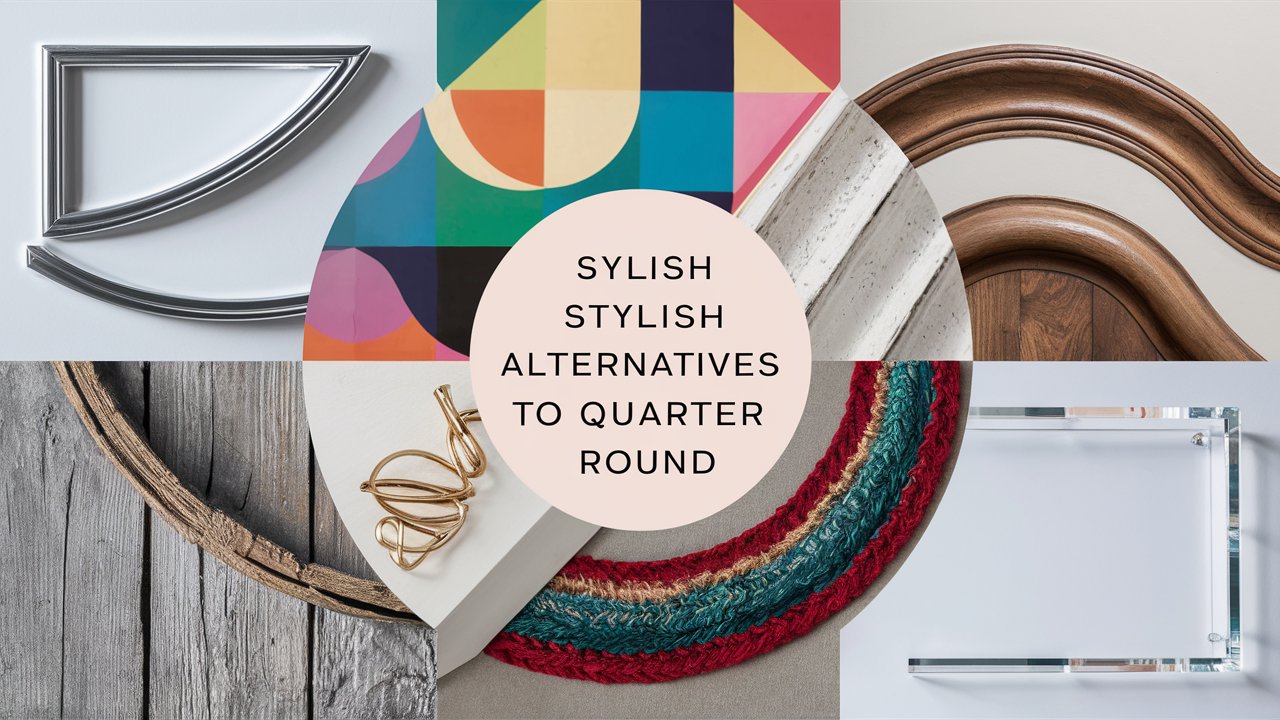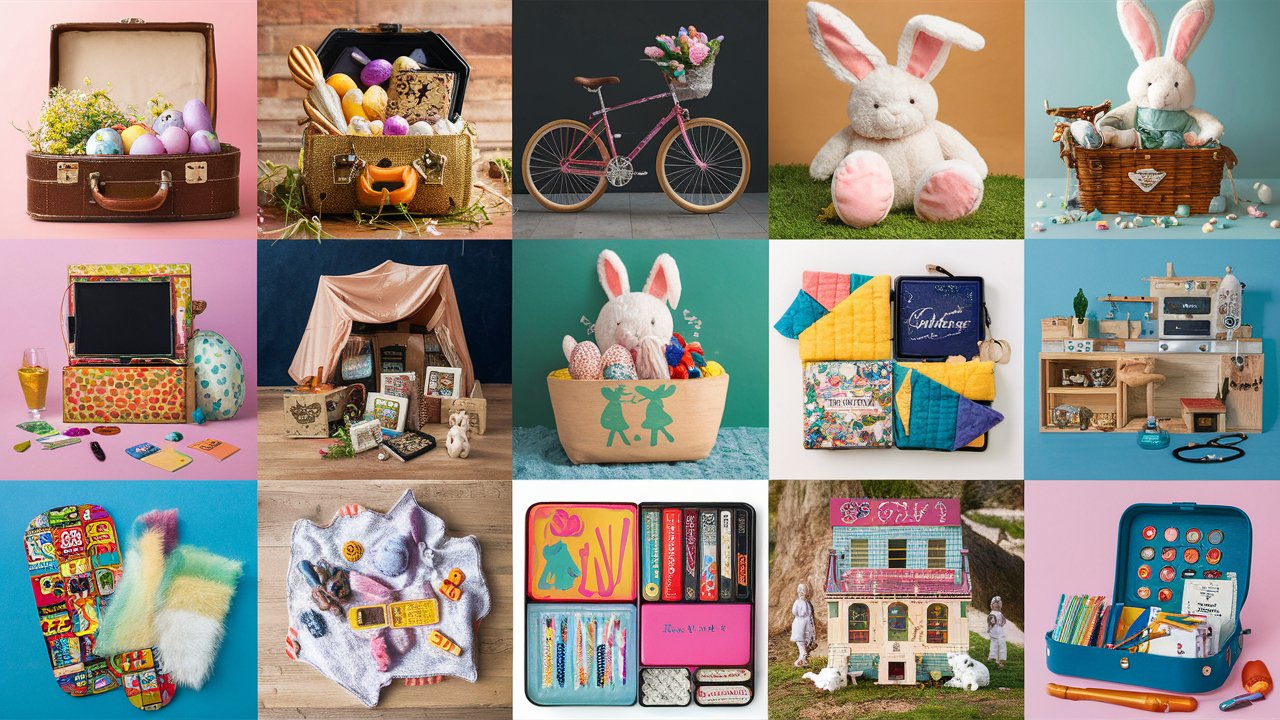As our awareness of environmental sustainability grows, so too does our quest for eco-conscious choices in everyday living. Amidst this green wave, the realm of home design and renovation has not been left untouched.
Traditional paint, once laden with harmful chemicals and heavy environmental footprints, is now being challenged by a league of environmentally-friendly alternatives. These innovative solutions not only offer a greener path for the planet but also promote healthier living spaces for ourselves and our loved ones.
In this exploration of 8 Environmentally-Friendly Alternatives to Traditional Paint, we invite you to join us on a journey beyond the conventional cans lining store shelves. Imagine paints crafted from recycled surplus or delicately concocted from the humble ingredients of milk and lime. Picture walls adorned with hues derived from natural oils or clay, each stroke a nod to both artistry and sustainability.
These alternatives aren’t merely about aesthetic appeal; they represent a shift towards conscientious choices that speak volumes about your commitment to the environment and personal well-being. So step into this colorful realm where every brushstroke carries a whisper of change – it may just redefine how you view painting your world.
Recycled Paint.
Looking to make a sustainable choice when it comes to painting your interiors? Consider recycled paint as a fantastic eco-friendly alternative to traditional options. This type of paint is crafted from surplus and unopened paint that has been reprocessed, giving a new lease on life to materials that might otherwise go to waste. It’s like giving old paint a chance at a fresh start!
One of the standout benefits of using recycled paint is its significant impact in reducing waste. By utilizing leftover and unused paints, you’re contributing to a more circular economy where resources are reused and repurposed rather than discarded.
Not only does this help in minimizing environmental harm, but it also presents a cost-effective solution for homeowners looking to refresh their spaces without breaking the bank. So, not only are you doing good for the planet, but you’re also being savvy with your budget – a win-win situation all around!
Milk Paint: A Natural and Timeless Choice.
Milk paint, a centuries-old natural paint alternative, offers eco-conscious homeowners and design enthusiasts a sustainable way to add color to their spaces. Made from simple ingredients like milk proteins (casein) mixed with lime and earth pigments, milk paint not only provides aesthetic appeal but also nods to historical craftsmanship.
This traditional paint option has been found on the walls of ancient dwellings and remains popular today for its authentic look and environmentally-friendly composition.
One of the standout advantages of using milk paint is its biodegradability. Unlike many synthetic paints that release harmful chemicals into the environment during production and disposal, milk paint breaks down naturally over time without leaving a lasting impact on ecosystems.
Its eco-friendly nature aligns well with contemporary green living ideals, offering a chance to reduce one’s carbon footprint through conscious decorating choices.
Beyond its sustainability credentials, milk paint also boasts a unique visual quality that sets it apart from mainstream options. The matte finish created by milk paint can lend a soft, velvety texture to surfaces, perfect for creating a cozy or rustic atmosphere within homes or businesses.
Its ability to age gracefully over time adds character and depth to painted surfaces, making it an excellent choice for those seeking a blend of aesthetics and environmental responsibility in their design projects.
Clay Paint: Naturally Effective and Chemical-Free.
When it comes to embracing environmentally-friendly alternatives, clay paint stands out as a versatile option that not only adds color to your walls but also benefits your indoor environment. This natural paint is a blend of clay mixed with pigments, offering a unique texture and earthy feel to spaces.
Unlike conventional paints filled with harmful chemicals like volatile organic compounds (VOCs), clay paint is a safe choice for those conscious of their health and the environment.
One notable advantage of using clay paint is its ability to regulate humidity levels indoors. The porous nature of clay allows it to absorb excess moisture in the air, creating a breathable environment that can help prevent mold growth or dampness issues.
Imagine painting your living room with clay-based colors that not only look stunning but also contribute to a more comfortable and healthier atmosphere for you and your family.
By opting for clay paint, you are not just adding aesthetics to your walls; you are making a sustainable choice that supports both the planet and personal well-being. Say goodbye to the strong odors associated with traditional paints, as clay paint emits little to no odor during application and drying.
Your home transformation journey can now be both visually appealing and environmentally conscious with the use of this ancient yet innovative painting solution.
Low-VOC Paint for Cleaner, Healthier Indoor Spaces.
When looking to paint your home with eco-conscious choices, low-VOC (Volatile Organic Compound) paint emerges as a standout option. These paints contain significantly fewer harmful gases compared to traditional paints, making them vital for maintaining indoor air quality and promoting better health within living spaces.
Imagine coming back to freshly painted walls without the usual overpowering chemical smell that often accompanies conventional paints. Low-VOC paints offer not only aesthetic transformations but also contribute to a healthier environment inside your home.
By reducing exposure to toxic emissions commonly found in standard paints, you’re creating a safer haven for your loved ones while also minimizing your carbon footprint.
An added advantage of opting for low-VOC paint is its versatility in application. Whether you’re sprucing up a nursery, refinishing furniture in a workspace, or adding color to a kitchen – these environmentally-friendly paints blend seamlessly into various settings.
So, next time you embark on a painting project, consider the long-lasting impact of choosing low-VOC options for both your personal well-being and the planet’s sustainability.
Plant-Based Paints: Eco-Friendly and Sustainable Painting Solutions.
When it comes to environmentally-friendly alternatives to traditional paint, plant-based paints shine as a sustainable choice for eco-conscious homeowners and design enthusiasts. Derived from natural sources like soy, citrus, or linseed oils, plant-based paints offer a green solution that minimizes the environmental impact of painting projects.
These paints are biodegradable, making them an excellent option for those looking to reduce their carbon footprint during home renovations.
One of the key advantages of plant-based paints is their easy cleanup with water, eliminating the need for harsh chemicals typically used in cleaning painted surfaces. Imagine being able to achieve a fresh coat of paint while also contributing to a healthier indoor environment without compromising on performance.
With plant-based paints, homeowners can enjoy vibrant colors on their walls while knowing they are making a sustainable choice for both their homes and the planet.
Whether you are revamping your living room or adding a splash of color to your kitchen cabinets, plant-based paints offer versatility and peace of mind. By opting for these eco-friendly alternatives, you not only enhance the aesthetic appeal of your space but also promote a greener lifestyle.
Embrace the beauty of nature in your home with plant-based paints that align with your values of sustainability and environmental stewardship.
Chalk Paint: The Versatile DIY Darling.
If you’re looking for a paint that ticks all the boxes when it comes to ease of use and versatility, chalk paint might just be your new best friend. Made primarily from calcium carbonate, talc, and pigment, this type of paint has gained popularity among both seasoned DIY enthusiasts and professional interior designers for its unique characteristics.
One standout feature of chalk paint is its lightning-fast drying time, allowing you to get those multiple coats done in a fraction of the time compared to traditional options.
Unlike some paints that require extensive prep work like sanding or priming, chalk paint is known for its minimal preparation needs. This makes it an attractive choice for those who want to give their furniture or walls a fresh look without spending endless hours getting surfaces ready.
Whether you’re tackling an upcycling project with old wooden chairs or revamping your kitchen cabinets, chalk paint offers a user-friendly experience that encourages creativity and experimentation.
Another reason why chalk paint has carved out its place in the world of eco-friendly alternatives is its application versatility. From achieving a smooth, classic finish to creating a distressed or shabby chic look with ease, this type of paint allows you to explore various techniques effortlessly.
Whether you prefer using brushes, rollers, or even sponges for a textured effect, chalk paint adapts well to different methods, giving you the freedom to unleash your inner artist while making environmentally-conscious choices in your home design endeavors.
Natural Oils Paint.
Natural oils paint is a sustainable and eco-friendly alternative to traditional solvent-based paints. These paints are made using ingredients like tung oil or hemp oil, which not only provide vibrant colors but also offer numerous benefits for your home and the environment.
One key advantage of natural oils paint is its durability – once applied, it can withstand wear and tear better than many conventional paints. This means less frequent repainting, saving you time, money, and reducing the resources needed for upkeep.
Moreover, natural oils paint provides a non-toxic option compared to solvent-based paints that release harmful chemicals into the air during application and drying. By choosing natural oil-based paints, you create a healthier indoor environment for your family and pets without sacrificing on performance.
When it comes to longevity, these paints often outshine their synthetic counterparts, maintaining their color vibrancy and finish over time with minimal fading.
For those looking to embrace a more sustainable lifestyle in their home decor choices, natural oils paint is a fantastic option. Imagine giving your walls a fresh coat of paint that not only looks beautiful but also aligns with your values of environmental responsibility.
With the growing availability of natural oils paint in various colors and finishes, incorporating eco-friendly design elements into your living spaces has never been easier or more stylish. So why not make the switch to natural oils paint for your next painting project?
Embracing Eco-Conscious Paint Choices for a Greener Tomorrow.
As we journey towards a more sustainable future, the significance of opting for environmentally-friendly alternatives to traditional paint cannot be overstated. The choices we make in home renovations and design projects have a direct impact on our environment and personal well-being.
By choosing paints like recycled paint, milk paint, clay paint, low-VOC paint, plant-based paints, chalk paint, and natural oils paint, we contribute positively to reducing waste, improving indoor air quality, and supporting eco-friendly practices.
In every stroke of eco-conscious paint lies a story of care for the planet and its inhabitants. As eco-conscious homeowners, DIY enthusiasts, interior designers, or renovation professionals, let us continue to explore these innovative options. Let’s infuse our living spaces with creativity while nurturing a greener tomorrow.
Together, through informed choices and conscious actions, we can transform our homes into havens of sustainability and beauty. So go ahead, pick your palette with thoughtfulness and embrace the vibrant hues of an environmentally-friendly future!
I am commitment to crafting compelling narratives and delivering insightful content continues to inspire and inform readers across various platforms. Explore her articles on AlternativesZone.com and FactAfterFact.com to experience a rich tapestry of knowledge and discovery. Here I Analyze and Test the products and services together with my team before we recommend them to our users. Nice Reading Here!








No responses yet